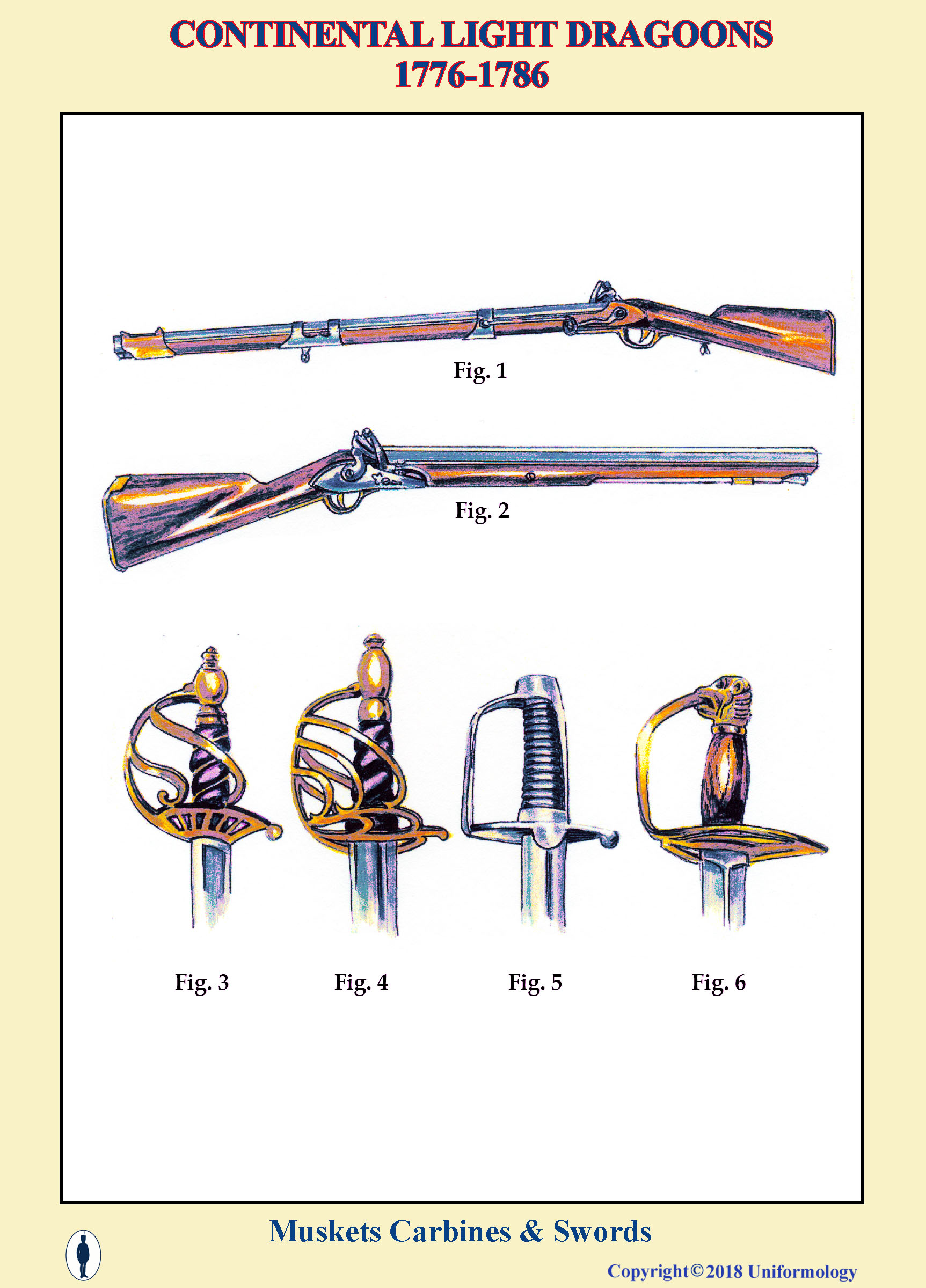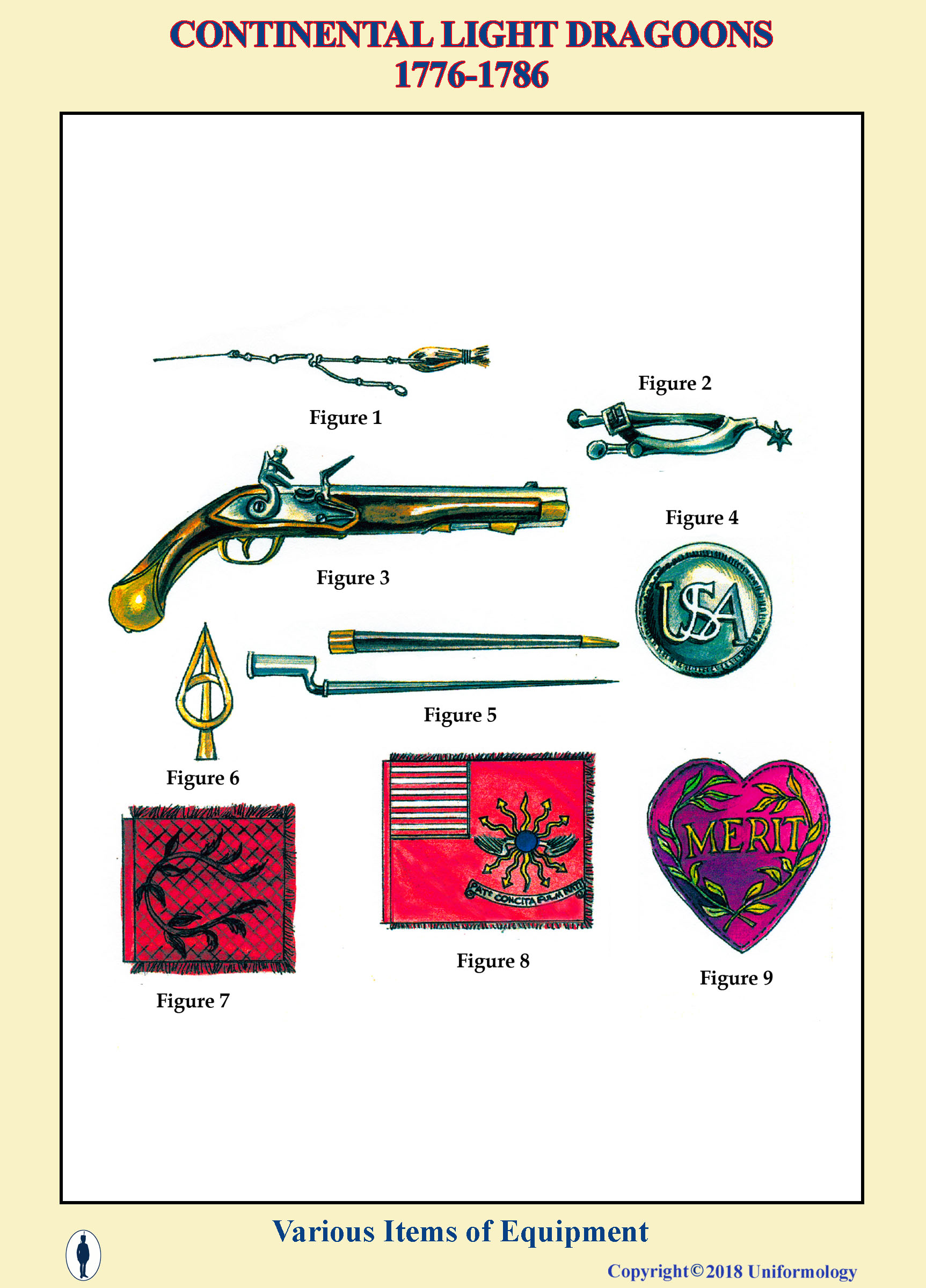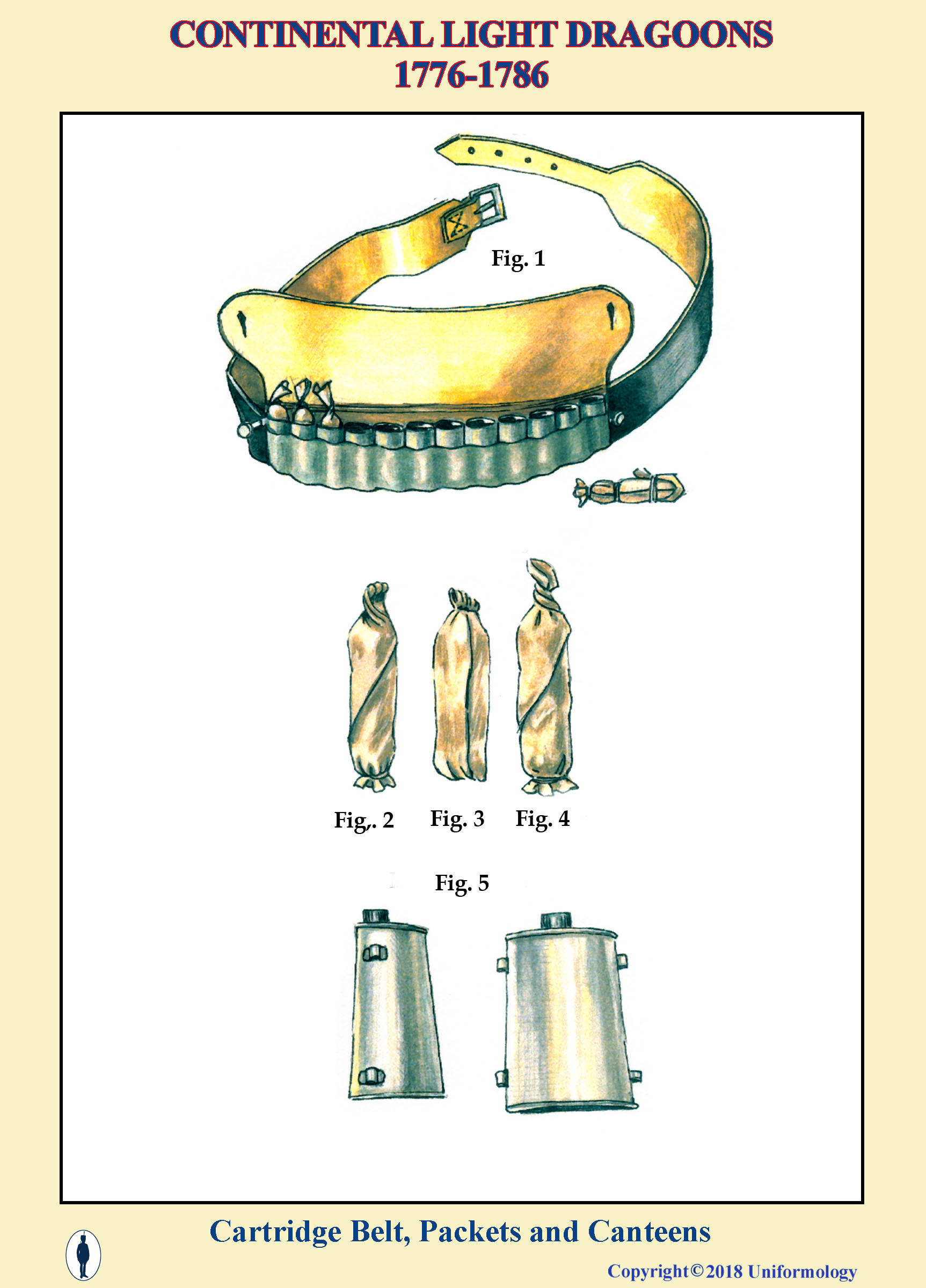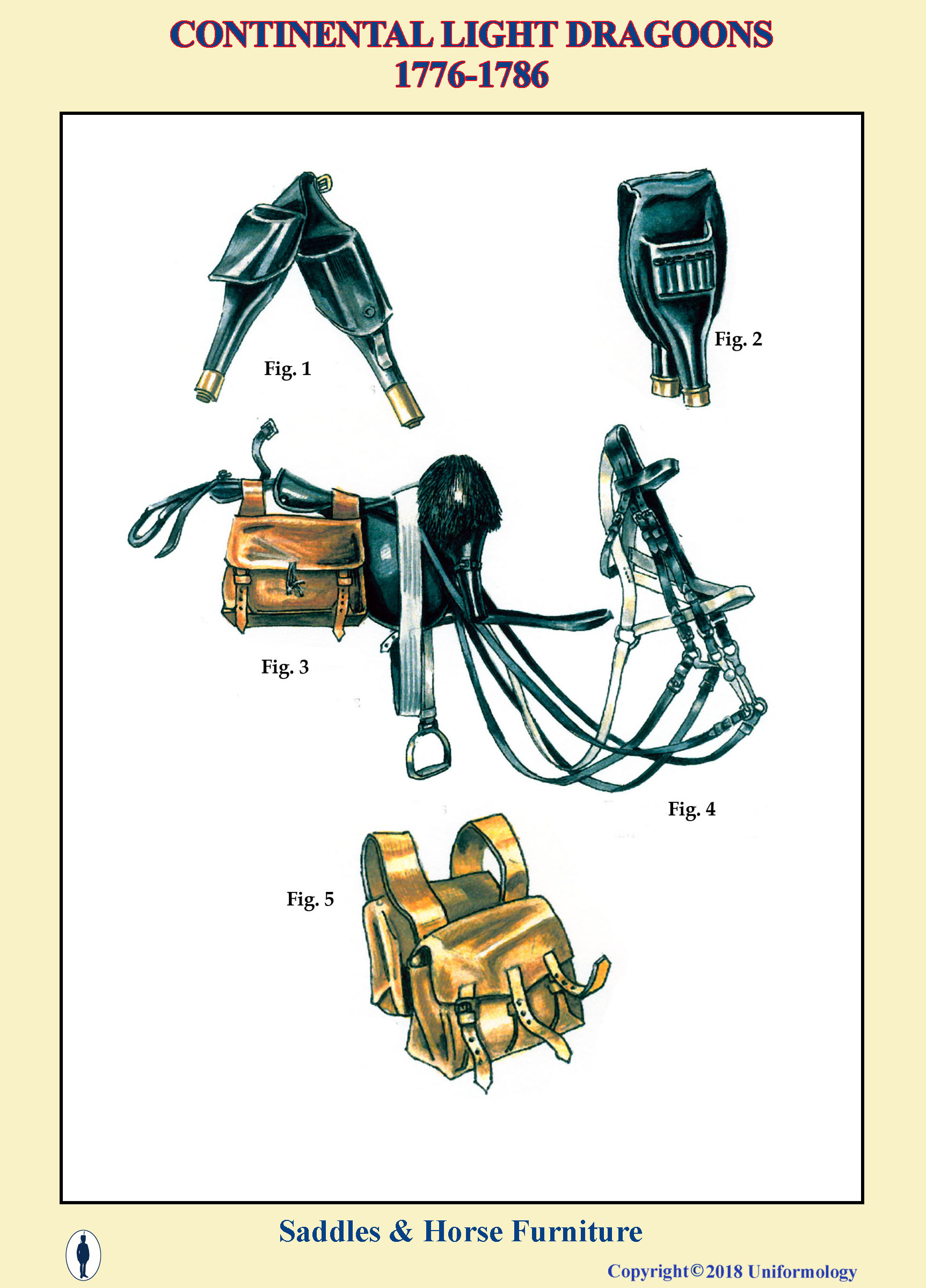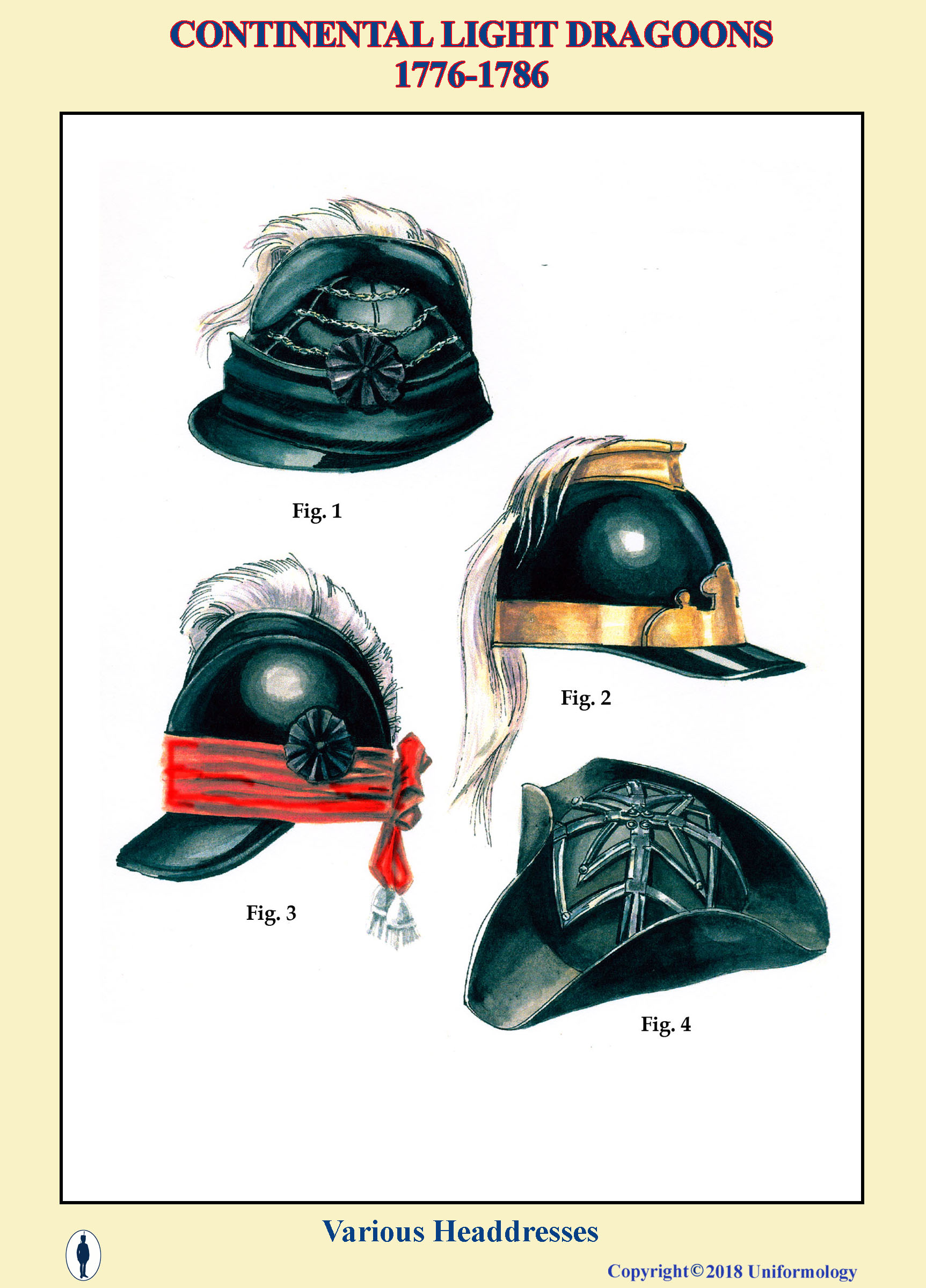CONTINENTAL LIGHT DRAGOONS IN
THE AMERICAN REVOLUTION
From the book by Philip Cranz published by Uniformology in 2008
THE WORLD OF MILITARY UNIFORMS
1660-1914
CONTINENTAL LIGHT DRAGOONS
1776-1786
Illustrations by By Stephen Palatka
Page 2
Figure 1
French Model 1763 - 66 Carbine. .65 Calibre. The overall length was 46 inches. In very short supply these carbines were very much prized by Continental Dra goons.
Figure 2
British Musketoon also .65 to .68 calibre with a 26 inch barrel. This was the carbine issued to the British 16th and 17th Light Dragoons. It is a basically the same as the famous British "Brown Bess" musket that served through the Napoleonic wars. These were taken from captives and battlefield casualties whenever possible.
Figure 3
British style dragoon sabre with a brass mounted steel hilt.
Figure 4
Steel hilted brass mounted dragoon sabre with leather covered grip and 32 inch blade.
Figure 5
British Light Dragoon sabre of the 1773-1778 pattern with wooden grip.
Figure 6
American Sabre with a simple brass stirrup hilt and cherry wood grip and a 33 inch
WEAPONS, EQUIPMENT AND HEADDRESS
Figure 1
Pick and brush. This was usually worn on the musket belt. The pick was used to clear the touch hole and the brush to clean out the pan where the priming charge was poured to ignite the barrel charge and fire the musket.
Figure 2
American made spur
Figure 3
American made dragoon pistol which copied the pistols carried by the British 16th and 17th Light Dragoons
Figure 4
Brass finial which topped the staff carrying hte Eutaw flag of Washington's Legion
Figure 5
British or French bayonet used by dragoons on foot duty when carrying a full sized musket
Figure 6
Regular pewter button used on Continental uniforms.
Figure 7
The Eutaw standard carried by the Third Light Dragoon contingent of Washing ton's Legion in the Southern Campaign. Tradition says it was cut from a damask curtain and given to Colonel Washington.
Figure 8
Standard of the Second Light Dragoons
Figure 9
Badge of military merit. One of three known to have been awarded. The one illustrated here went to Sergeant Elijah Churchill of the Second Light Dragoons.
Figure 1
Troopers cartridge box. While most mounted troops of other armies wore their cartridge pouches in the traditional position over the right hip the Continental Dragoons favored the cartridge box worn in front around the waist.. Pistols were the only firearms issued to nearly all the dragoons and this low profile cartridge pouch was specially designed for pistol cartridges. While these were carried by many light dragoon troopers those troopers with muskets, carbines or rifles, either issued or liberated from the enemy probably obtained full size cartridge boxes carried in the traditional location.
Each country had its own traditional way of doing things. Cartridges were "pre rolled" and packaged then issued to the troops. Only riflemen for the most part still carried the powder horn or powder flask for measuring the powder charge then ramming down a leather or cloth patched ball. This was far too slow for the tactics used by both sides in open battle.
Fig. 2
iThe type cartridge issued to the British soldiers
Fig. 3
This was the typical French issue cartridge
Fig. 4
This is the cartridge as assembled by the Colonial Army.
Fig. 5
A metal canteen known to have been carried by a trooper in the Revolution.
Figure 1
British style saddle holster with leather flaps. These flaps could have been covered with bearskin or cloth covers in the regimental color and trim.
Fig. 2
Open style saddle holsters. These were usually fitted with bearskin covered leather flaps to protect the pistol and charges from the elements. This particular example did not have the bearskin covers but does sport severl black painted tin cartridge tubes under each flap.
Fig 3
American made civilian saddle converted for military use. Many different types of saddles were used and most were modified with extra rings and straps added to carry military equipment.
Fig. 4
English halter and double bridle. The double bridle was essential for military use by providing an extra set of reins in case one was dropped or cut in a combat situation.
Fig. 5
Saddle bags of russet leather.
Fig 1
This is a cap which has been attributed to the 3rd Regiment or Baylor's dragoons. Note the white horsehair crest across the top. Rows of small steel chain surround the crown of the cap to protect the wearer from sabre cuts.
Fig. 2
This is a cap of the type worn by the First and Second Dragoon regiments. Once again this one has a white horsehair crest. Brass bindings and front plate indicate this a probably an officers cap.
Fig. 3
The artist illustrates this type cap as being worn by the Fourth dragoon regiment. The red turban has a purpose in addition to adding some color to the black leather cap. It could be unwrapped from the helmet and draped down over the back of the head and neck. ( See the Second Dragoon illustration on plate 10)
Fig 4
This is a civilian style tricornne had in common use during the period of the American Revolution. These were worn as often as not by mounted troops. This one has been modified with a decorative steel cage, probably made by a black smith covering the crown. This offered very good protection from sabre cuts to the skull.

